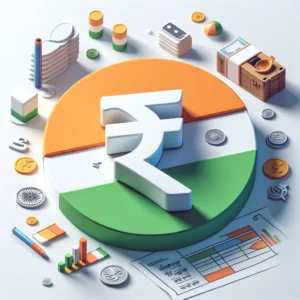CGST vs SGST: Difference Between CGST & SGST
- 30 Aug 24
- 8 mins

CGST vs SGST: Difference Between CGST & SGST
Key Takeaways
- Unified Tax Structure: GST integrates multiple taxes into a single system, simplifying compliance and reducing the overall tax burden on goods and services in India.
- Components of GST: The GST is composed of CGST, SGST, and IGST, which apply based on whether transactions are intrastate or interstate, ensuring fair revenue distribution between the central and state governments.
- Tax Calculation: For intrastate supplies, GST is divided equally between CGST and SGST, while IGST applies to interstate supplies, including imports and exports, maintaining a uniform tax regime.
- Objective of GST: The main goals of GST are to eliminate multiple tax systems, increase business compliance, reduce prices of goods and services, boost national revenue, and enhance productivity and efficiency.
- Benefits of GST Registration: Registering under GST allows businesses to claim input tax credits, facilitates inter-state transactions, offers reduced tax liability through the composite scheme, and ensures easier compliance.
The Goods and Services Tax (GST) Act, of 2017 introduced a new tax regime applicable to the supply of goods and services. There are different components of this tax, namely Central Goods and Services Tax (CGST), State Goods and Services Tax (SGST) and Integrated Goods and Services Tax (IGST). Learn about the components of GST and the difference between CGST and SGST in detail here. Further, learn about the objective of this new taxation regime, who is liable to pay and the benefits of GST registration.
What Is GST?

The Goods and Services Tax is a type of indirect tax that the Government of India levies on the supply of goods and services for consumption domestically. It is a single tax law prevailing in the Indian subcontinent.
The buyer pays the price inclusive of GST as the government levies it on the final price. The seller or supplier further forwards the GST to the government for revenue generation in the Indian taxation system. In the case of intra-state transactions, the GST is equally distributed between the central and state governments under CGST and SGST.
Objective of GST
The objectives of implementing the GST regime are as follows:
- To eliminate multiple tax systems
- Increasing compliance with businesses
- To reduce the prices of goods and services
- Boosting the nation’s revenue generation
- To increase productivity and efficiency
Different Types of GST Tax
The current GST framework determines the applicable tax based on the type of transaction. There are 3 types of Goods and Services Tax in India: SGST, CGST and IGST. Here is a detailed overview of the different types of GST:
State Goods and Service Tax
The State Goods and Service Tax (SGST) is a portion of the GST that the state government levies. The state government where the goods or services are consumed levies SGST under the SGST Act, of 2017.
All types of state taxes such as value-added tax, luxury tax, entertainment tax, entry tax and other similar taxes have been merged under SGST after its introduction. Thus, the state government levies SGST on the intrastate supply of goods and services for a uniform taxation system.
Central Goods and Services Tax
The Central Government levies CGST, or Central Goods and Services Tax, on intrastate supplies of goods and services under the periodically amended CGST Act of 2017.
It is an equal portion of SGST that is levied by the state government on the intrastate supply of goods and services. Further, the government levies CGST on the same products on which it levies SGST. For instance, if a seller or supplier sells timber wood in Telangana, both the CGST and SGST will apply.
Thus, the central and state governments agree upon sharing the revenue generated from GST through the equal share of CGST and SGST. Under Section 8 of the CGST Act, of 2017, intra-state supply of goods and services can attract a maximum of 14% CGST and SGST each.
Integrated Goods and Services Tax
The government levies Integrated Goods and Services Tax (IGST) on inter-state supply of goods and services. In other words, for instance, if goods like timber wood are supplied from Delhi to Rajasthan, IGST will apply.
The tax received from integrated GST will be shared by the central and state governments. Further, IGST applies to imports to India and exports from India. Notably, exports need to be zero-rated when IGST is applicable.
To understand the calculation of IGST, let us consider an example. For instance, company A supplies goods from Chandigarh to company B in Daman and Diu and Dadra and Nagar Haveli costing ₹1 lakh. Considering that the IGST rate is 18%, the GST amount will be ₹18,000. This GST amount will be split between the centre and Daman and Diu and Dadra and Nagar Haveli governments as it is IGST for interstate supplies or inter-union territory supplies.
Who Is Liable to Pay GST?

The following entities are liable to pay GST in the form of both CGST and SGST:
- Businesses
- Suppliers
- Distributors
- Manufacturers
- Importers
Differences Between CGST and SGST Calculation
You can understand the concept of Central GST and State GST with the following examples:
For instance, company X sells goods worth ₹15,000 at an applicable rate of 18% GST to a buyer Mr Y. In this case, the total GST amount will be ₹15,000 * 18% = ₹2,700. Since CGST and SGST are equal portions of GST, CGST will be ₹2,700/2 = ₹1,350 and the remaining ₹1,350 will be SGST.
Let us consider a second example where company P sells cakes to Mr Z at ₹5,000 at a GST rate of 5%. As the total GST consists of two components namely SGST and CGST in equal proportion, the SGST rate is 2.5%. Thus, SGST = ₹5,000 * 2.5% = ₹125.
What Is The Difference Between CGST and SGST?
Understanding the differences between CGST and SGST is crucial for accurate GST payment. Here are the key differences between the two:
| Factors | CGST | SGST |
| Meaning | Existing service tax, central excise duty and other taxes have been replaced by the Central Goods and Services Tax (CGST) | Sales tax, luxury tax and other taxes have been replaced by State Goods and Service Tax (SGST) |
| Imposing authority | Central Government | State Government |
| Collector | Central Government of India | State Governments of India |
| Benefiting Authority | Central Government | State Government |
| Registration | You need to register for CGST if your annual turnover exceeds ₹20 lakhs (₹10 lakhs in the case of Northeastern states) | If the annual turnover exceeds ₹20 lakhs (₹10 lakhs for northeastern Indian states), then you have to register for SGST. |
| Revenue Sharing | The central government can share the revenue generated from CGST with the state government. | The state government can not share the revenue generated from SGST with the central government. |
What Are The Benefits of Getting GST Registration?
The registration of business under the GST regime offers multiple benefits, some of which are discussed below:

- Business owners can easily avail input tax credits (ITCs) without any restrictions.
- They can prioritise inter-state transactions or the sale of goods and services with ease.
- Small business owners can opt for the composite scheme which provides opportunities for less tax liability, higher working capital and lesser compliance.
Conclusion
Understanding the differences between CGST and SGST is crucial within the GST framework, as it mandates how tax revenues are equitably shared between the Central and State Governments for intrastate supplies. Conversely, for interstate supplies, IGST comes into play, with the tax revenue again being shared between the Central and State Governments, maintaining a seamless and unified tax structure across India.
💡 If you want to pay your GST with Credit Card, then download Pice Business Payment App. Pice is the one stop app for paying all your business expenses.
 By
By 

















